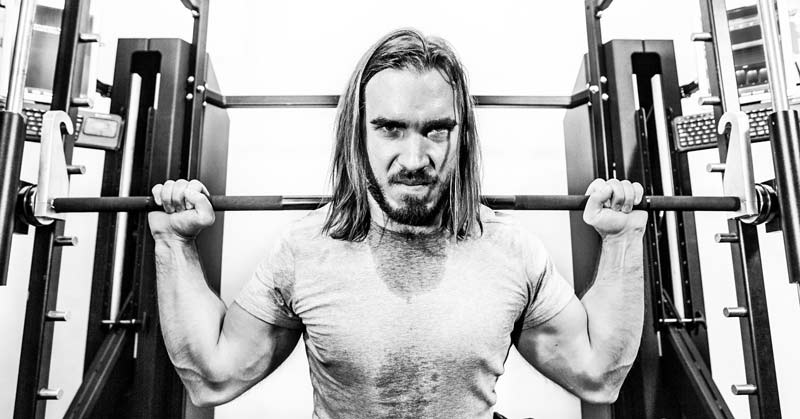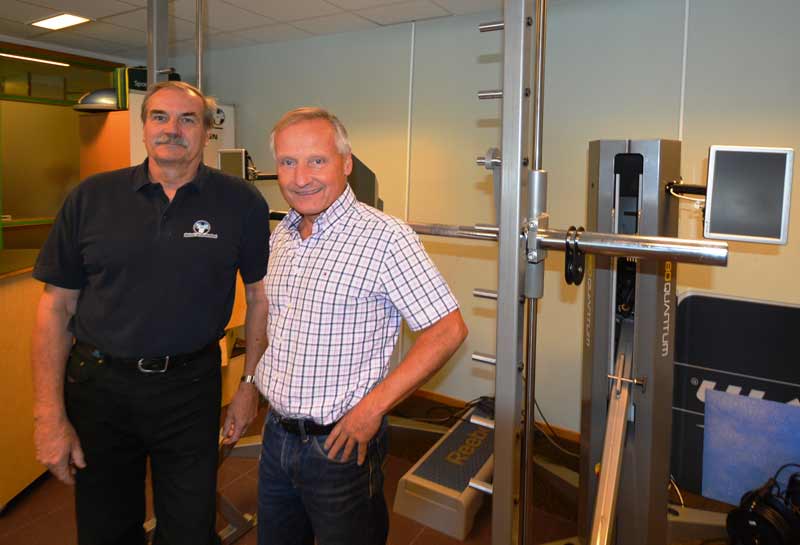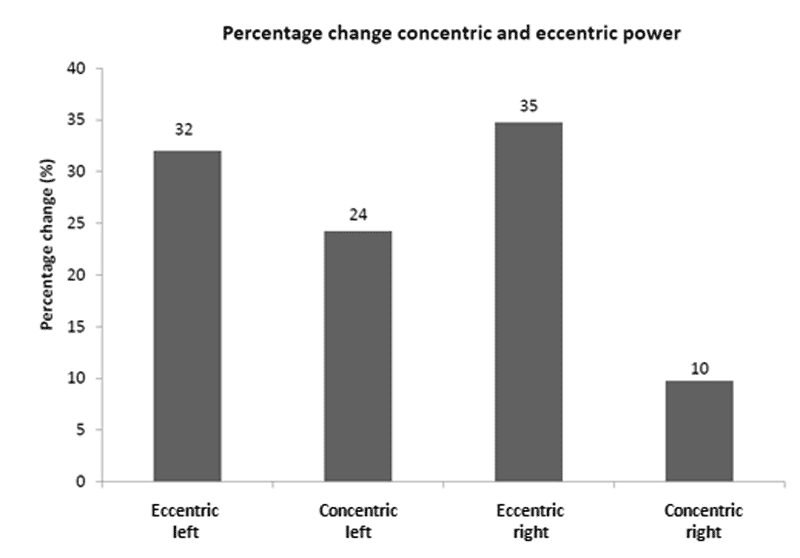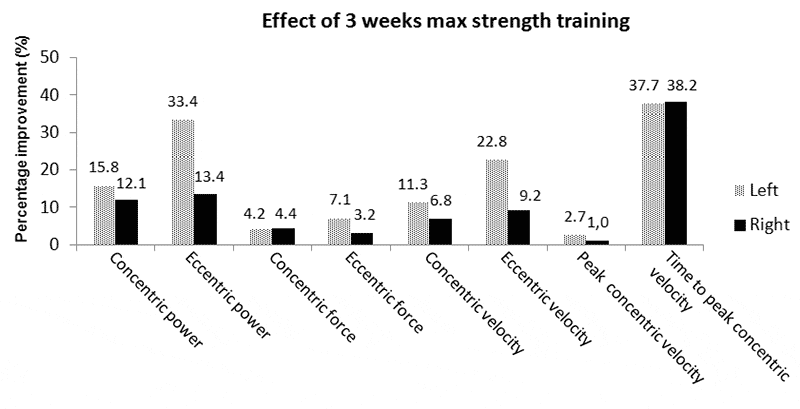
Interested in new technology that pushes the envelope in strength, speed, and power training? Then this article is for you. It’s the story of how Malmö Sports Academy (MIA) in Sweden became one of the first users of the 1080 Quantum system. Today MIA uses the Quantum’s robotic resistance technology to train a group of 50 elite-level athletes across 17 different sports. Welcome to Sweden and the Malmö Sports Academy, the home of iconic trainer and coach Kenneth Riggberger and visionary general manager Jan-Olov Jakobsson.
In 2011, MIA and the then-startup company 1080 Motion agreed to deploy the first version of the Quantum system for comprehensive use. If you are unfamiliar with robotic resistance, Quantum technology requires some explanation. There are no weights, air cylinders, or other traditional hardware inside the unit. Instead, it has a powerful electric servo motor controlled by a computer. The result is a resistance training and testing device in which you control and manipulate resistance type, load, and movement speed to create training modalities not possible with other types of equipment.
A Variety of Uses
With the push of a button, for example, you can overload the eccentric phase of a repetition by up to 200% relative to the concentric load. You can do ballistic training at high speeds and loads for power maximization without dealing with a real mass that jolts joints and soft tissue on the rebound. The Quantum can be set up as an isotonic (constant load no matter the speed) resistance device free from inertia when rehabilitating athletes or if you’re into isotonic training at high speeds. Or you can use it in isokinetic (constant and typically low speed no matter the force) mode for max force development and hypertrophy. The system can even provide useful vibration for working on injured muscles and tendons.
The Quantum’s “ballistic” mode is unique. Used for training power and explosiveness, it is particularly valuable for MIA’s elite athletes. The great difference with other resistance technology is how this feature deals with inertia in the various phases of a repetition. Using the ballistic setting, the system behaves just like a regular mass as long as you are increasing movement speed in a repetition. This means the athlete must overcome the natural counterforce of inertia that the body must be proficient at handling when running, jumping, swinging a bat, or throwing a football.

However, there’s a major difference when the movement speed is leveling out or decreasing in that same repetition. The Quantum system takes away the “free ride” the athlete would normally get when working concentrically with a regular mass that has built up speed and momentum. As a result, the athlete has full contact with the resistance during the entire range of movement, independent of acceleration and deceleration.
If we talk about training as inducing neuromuscular stress, this is stress maximization causing the athlete to produce about 30% more average power compared to a repetition using the same load but with a normal weight. This increased intensity is fundamentally different from any other resistance training whether with a normal mass, air-powered isotonic system, bungee cord, or flywheel. Combine this with eccentric overload and you’ll realize this is new and exciting territory for strength and conditioning.
The Quantum system accurately measures how much force, power, and speed is created in every repetition with separate readings of the concentric and eccentric phases of the movement. With all things combined, it’s a unique training tool that provides real-time performance data.
Talking with Riggberger
The coach is at home on a Sunday afternoon when I interview him. I want to learn about his experiences in working with some of Sweden’s best athletes.
He takes me to the early months of 2011 when he experimented with the Quantum to understand how best to use it. At that time, only a few had been built and—unlike today—there was no broad knowledge base to lean on. Riggberger, like any strength coach working with elite athletes, has a tremendous responsibility to give them the best physical foundation to succeed in competition.
Being confronted with a new and potentially extreme training tool can present a dilemma. Even if you logically understand the benefits of a new training method, the last thing you want is to compromise your athletes’ next season or increase their risk of injury. Playing safe is natural, but at the same time, everything we do in elite sports is keyed to maximize the chance of winning.
Riggberger explains that the first time he tested the Quantum it took 3 minutes to realize its potential, but he needed several months of incremental learning to implement it since there was no experience with the system at the time. He adds, “We were the early explorers, but now there are more users like us. Research institutions have also understood this is something unique and are studying on the effects of this type of training.”
He also points out that the system needs to be applied appropriately for different levels of athletes. Since the Quantum is capable of making training more extreme than regular weight training (or less if the task is to rehabilitate), you have to know the limits of application in relation to individual athletes. There’s a huge difference between a youth athlete in early puberty and a D1 football player or sprinter competing internationally. The Quantum is like driving a sports car: Having 600 horsepower under the hood doesn’t mean you can go full throttle at all times. But when the road is wide and straight—pedal to the metal!
Riggberger states, “The Quantum is not to be thought of like traditional weight training. It’s easy to make that assumption when you use it for squats and presses because it looks the same to the eye. But other than the bar itself it has nothing to do with a regular weight that’s always influenced by the same rate of gravity no matter what you do. Just like any advanced form of training like plyometric jumps, you use it with great care and precision depending on the capability of the athlete.”
Getting Results
With the background of how Riggberger approached his new tool, I was eager to get to the heart of the story: what kinds of results has the Quantum delivered?
Like most coaches, Riggberger works with many athletes and has limited time for experimentation and documenting results. But he decided to systematically use the system for a specific purpose and document the results into published case studies with three elite athletes (a hurdler, a long jumper, and a discus thrower). Riggberger can discuss the first two while the third is still a work in progress. For the more scientifically minded reader, these and other studies and additional facts are published on 1080 Motion’s website.
Let’s look at the 110m hurdler (13.47). Riggberger wanted to explore his belief that the Quantum system can be effective for brief but high-intensity strength training during the competitive season. Extensive weight-based training within the season increases the injury risk and is a challenge to balance with other training and competition cycles. Riggberger hoped the Quantum system would reduce the athlete’s total training volume and injury risk while maintaining leg power performance.
The study lasted nine weeks, during which the only form of weight training was 6 sessions with single-leg squats, 2 sets of 5 reps on each leg. That’s an average of just one session per 10.5 days! The protocol was a concentric load of 119 kg/262 lbs with no speed limitation and 139 kg/306 lbs in the eccentric phase at 4 m/s speed. That implies a 17% eccentric overload and an exaggerated eccentric speed, causing the quad musculature to stretch more quickly compared to a regular barbell squat.
1080 Quantum provides precise control of resistance type, load, and movement speed. Share on XRiggberger’s theory is that the ability to assist with speed in the eccentric phase creates a greater loading in the stretch-shortening cycle, thereby helping to maximize fast-twitch fiber activation. The 17% overloaded eccentric load contributes to this process. Since this is a very intense way of doing single-leg squat the athlete needed a 10-minute rest between sets. Riggberger kept track of the total training time and concluded that for each session the athlete only worked under tension for 8 seconds concentrically and 6 seconds eccentrically.
In total over the 9 weeks, the combined time under tension—concentrically and eccentrically—was no more than 1 minute and 26 seconds. Measuring the change in power with both the Quantum’s internal data and a separate bar speed encoder for verification, Riggberger concluded that concentric power had increased by 32% on the left leg and 35% on the right, with eccentric power increasing by 24% and 10% respectively. Peak velocity went up 29% and 11% percent while time-to-peak velocity improved by 12% and 19%. Riggberger also tested the athlete in four different jump tests and documented an across-the-board improvement.

Says Riggberger,“I was quite surprised to see this kind of improvement from such limited and infrequent training, especially in an athlete that was at a very high-performance level to start with. My goal was to be able to maintain power performance, but instead I got a major improvement”.
Video 1. High-intensity single leg squats. Isokinetic concentric phase and 17% eccentric overload.
Long Jumper
Riggberger’s second case involved a long jumper with a personal best of 8.25 meters (27.07 feet). The aim of the study was similar to the first case: verifying the effect of a short-duration/high-load strength program. Here the single-leg squat study lasted 3 weeks, with two sessions per week. The concentric load was 121 kg/267 lbs and the eccentric 141 kg/311 lbs. The results were similar to the hurdler: concentric power increased by 16% on the left leg and 12% on the right while time-to-peak-velocity improved by 38% on both legs.
Riggbergersaid, “Overall the results show greater improvements on the left leg. Since this is a right-leg long jumper, the right leg is naturally more developed so it’s not surprising to see greater improvements on the left where the relative improvement potential should be greater. It was still a big deal for me to be able to see a 12% power increase on the leg that hits the plank. It tells me we took a world-class athlete a good step further on his performance curve.”

I asked Riggberger to sum up his experience of implementing the Quantum system at MIA. “I’m confident to say at this time that there is nothing to compare with if you look at how quickly we get results from this system,” he noted. “I have developed a four-stage training model that we use broadly. It essentially starts with conditioning the athlete to greater intensity but at highly controlled movement speeds. From there, training progresses to greater intensity using a combination of isokinetic loads and high speeds. All the time we overload the eccentric phase to maximize the athlete’s ability to absorb the energy needed to explode concentrically.
“With this model, we get great and predictable results while reducing the risk for training injuries. Also, when I train sprinters and other sports where only one leg at a time is used, I exclusively do single leg strength training. I have measured this many times and can only conclude that two-legged training does not transfer optimally into single-leg performance. It’s a great tool for performing the more advanced single-leg power training using high loads and exaggerated movement speeds.”
Additional Perspective
After wrapping up with Riggberger, I called his boss, MIA General Manager Jan-Olov Jacobsson to get some perspective. I immediately sensed he is a highly energetic and forward-looking man who is very proud of his team. He explains how MIA is a major force for elite sports development in Sweden.
Commenting on the use of the Quantum, he explains, “We develop top talent, and we need state-of-the art-facilities and equipment to attract the very best to come here. The Quantum is an important part of the service we provide these athletes. This year we have also started to use the new 1080 Sprint system that uses the same technology but for up to 90-meter sprints.
“Sometimes new athletes and coaches are skeptical to new tools and methods, but once they start using the system, they tell us how the training makes them feel more explosive. It’s hard to put your finger on it, but it does something different that people like. Thanks to Kenneth’s hard work we have the numbers to prove that the system is superior at quickly building strength and explosiveness.”
Since you’re here…
…we have a small favor to ask. More people are reading SimpliFaster than ever, and each week we bring you compelling content from coaches, sport scientists, and physiotherapists who are devoted to building better athletes. Please take a moment to share the articles on social media, engage the authors with questions and comments below, and link to articles when appropriate if you have a blog or participate on forums of related topics. — SF

- Elite athlete in track & field, basketball, and European handball. Decathlete on Swedish national team 1972–1982.
- Track and field coach and trainer whose athletes have won 275 Swedish championship medals, including 100 gold.
- Track & field head coach in Swedish and World Championships, 1996 Olympics.
- Strength and conditioning coach for national teams in tennis, bandy, table tennis, goalball, and sled hockey.
- Lecturer in training and sports performance at Swedish Sports Federation and multiple universities.
- Has performed more than 10,000 tests on elite athletes.
